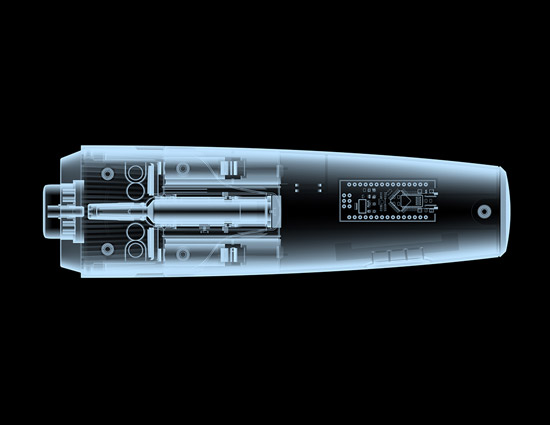Today, bytes act as both the building blocks and record keepers of our digital existence, having become the foundations for our societal infrastructure with demand only growing. Simultaneously, requirements around sustainability and long-term resilience are becoming imperative. Traditional silicon-based computing doesn’t fit well in this equation, requiring significant resources to maintain and replace as decay sets in.
What is biological computing?
Forgoing the electrical signals used in digital computers, biological computing uses DNA, RNA molecules, proteins and synthetic equivalents to perform computational processes.
This is not to be confused with:
- Computational biology: the process of designing, predicting or modelling biological systems using computational methods
- Bioinformatics: the processing and combining of biological data into useful formats like individual files, such as the human genome project.
Rather, biological computing programmes living cells or modules of cellular machinery to respond to chemical inputs, allowing them to mimic the computational processes of digital computers to store and read data, perform mathematical processes and harness Boolean logic (true/false computation).
This process has already been successfully employed for groundbreaking data storage solutions. A significant milestone was reached when Cambridge Consultants (CC) collaborated with CATALOG to develop the first DNA-based platform for data storage, encoding the entirety of English-language Wikipedia into a tiny vial of DNA at unprecedented speed, scale and accuracy.
Meanwhile, Swiss technology company Haelixa utilised elements of biological computing to ensure supply chain accountability from source to retail, promoting transparent traceability that offers brands distinct differentiation, security protection and credibility by reassuring consumers on the ethical authenticity of their products.
Smart vaccines and medical implants are another area where biological computing could be game-changing as researchers explore how DNA or proteins could be used within cells to perform basic calculations and allow more focused processing. In the future, biological computer systems could theoretically be implanted to monitor blood sugar, adjusting the body’s chemical releases and activity from a simple input.
So despite still being in its relative infancy, biological computing offers immense promise and efficiency in terms of cost, capability and innovation for a range of operations. But when we already have traditional computing, why do we need it?
Why do we need a sustainable alternative to silicon-based computing?
Our modern world is heavily reliant on silicon-based computing – but as the landscape evolves to necessitate an increased importance on sustainability goals, this reliance becomes unwise. The relatively short life span of existing data storage media (HDD, SSDs, magnetic tape etc) falls short of sustainability benchmarks, along with the significant e-waste and resources required in terms of electricity, pollution and labour. Estimates from the DNA Storage Alliance suggest that data centres consumed around 1% of total electricity worldwide in 2018, with this set to triple or quadruple over the next decade, presenting real concerns for long-term sustainability.
What’s more, data creation is increasing faster than storage capacity, with demand forecast to reach 160 zettabytes by 2025. Current silicon computers lack the data density and cost-effectiveness to meet this global demand, and as we fast approach the limits of silicon based-chip design, engineers are being forced to innovate. While many options are being explored, such as the development of novel silicon architectures and several other areas explored in our Future of Computing innovation briefing, biological computing presents another solution that could be more sustainable and cost-effective.
Realising the promise of biological computing
Yet there are still challenges left to overcome in making biological computing a true solution to our sustainability woes, including access speed, high initial costs, labour intensity and impracticality in converting between biological and digital storage.
It’s already been a long journey: DNA-based memory was proposed in the late 1950s and only realised in the late 1980s. Despite numerous leading biotechnology and computing organisations reaching several scaling milestones, biological computing has yet to tangibly impact our day-to-day lives or large-scale industry.
But that doesn’t mean it won’t. Looking back at the history of computing, traditional computers made little progress beyond small, incremental steps for decades until breakthroughs were made that allowed it to leap forward over just a few years, transforming computers from vast, impractical calculators into indispensable parts of everyday life.
Biological computing has already shown that we can write programs interpretable by natural machines. In many ways, current biological computing is reminiscent of early conventional computers in that the systems are large, highly specialised and require skilled operators to run. CATALOG’s biological computer is also highly automated and versatile, not unlike the first analog differential analyser developed by Vannevar Bush in the 1930s. In other words, breakthrough takes time, and progress is encouraging. So what more is needed for biological computing to become a practical and sustainable mainstream solution?
The next steps: what still needs to be done?
To make biological computers a real competitor for traditional computing, enabling faster memory access will be key. Currently, sequencing can take hours or days to prep – and while analysis can be fully automated, it still takes skilled bioinformaticians for non-routine applications. Similarly, integrating biological computing with existing technology such a keyboards and display monitors would make this technology far more accessible to general users.
The high price of initial costs will also need to be reduced. Yet while today biological computing isn’t practical at scale, the signs that cost-efficiency will continue to trend downwards to make DNA storage commercially viable are promising. While DNA data storage is expensive in the first instance, once the first copy has been made the cost for additional copies is low and can then be stored for decades without fear of decay.
As to the sustainability question, there are many elements that make biological computing an appealing alternative, with Microsoft already exploring the use of synthetic DNA for greener data storage on huge scales. But there are still obstacles to address, such as finding alternatives to the single-use plastics required for molecular biology processes, as well as the reliance on single-use reagents, such as purified enzymes that require cold storage.
Manual processes are neither convenient nor reliable enough to address these sustainability issues, while automation, although promising, demands large and expensive liquid handling systems. Fortunately, emerging technologies such as acoustic liquid handling systems and advancements in electrowetting-on-dielectric (EWOD) technology, such as the work CC has done on CellPreserve, offer potential solutions. Even so, for biological computing to realise it’s green potential these challenges must be addressed, or we risk substituting one environmental predicament with another.
Despite over 30 years since the first practical proof of principle, there is still work to be done to integrate biological computing with the everyday technology we’re familiar with. Biological computing is unquestionably less mature than traditional computing. But in the long-term, we believe biological computing will emerge as a key player in the technological landscape, and the benefits of harnessing the field’s full capabilities could be extraordinary. With all this potential lying tantalisingly close, all that’s left is for the right minds to take on the challenge.
Reach out to Matthew to continue the conversation and explore how we can find those missing puzzle pieces that will propel biological computing to the forefront of a more sustainable digital future.






